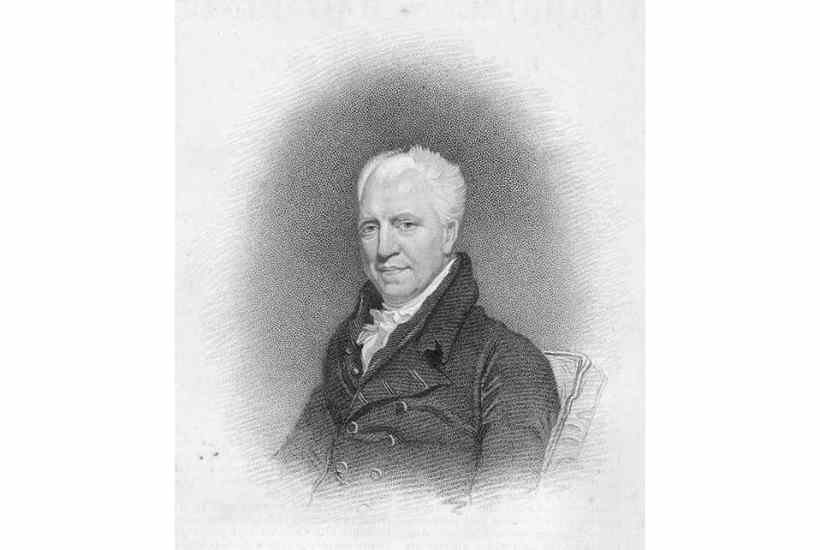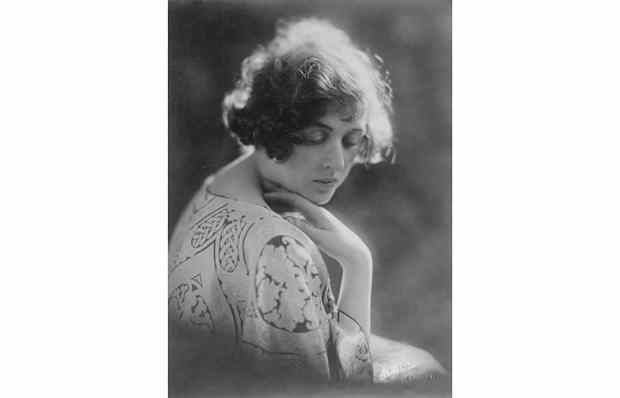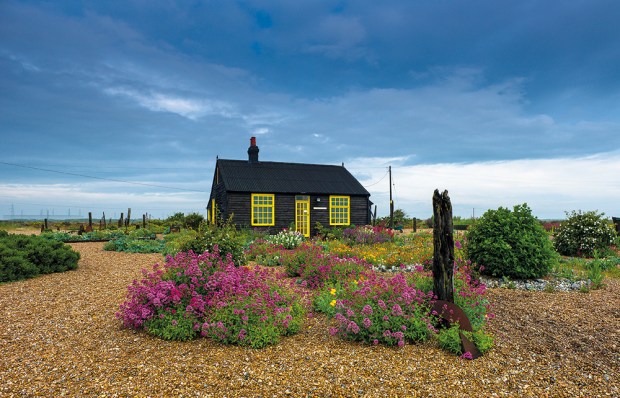‘To talk about Crabbe is to talk about England,’ E.M. Forster declared in a radio broadcast in May 1941, but few people today talk about this Suffolk-born poet or indeed read him. This makes Frances Gibb’s slender but thorough account of George Crabbe’s life and work all the more welcome.
In his time he was considered a leading, though controversial, figure, who wrote with stark realism about the spiritually and morally impoverished lives of East Anglian villagers and townspeople, in particular the inhabitants of the ‘little venal borough’ of Aldeburgh, where he was born in 1754 and spent an unhappy youth. After failing in his first career as an apothecary-surgeon, he entered holy orders, thanks to the patronage of the philosopher-statesman Edmund Burke, who also arranged for the publication of his protégé’s poetry.
Crabbe’s best known volume The Borough was published in 1810 and went through six editions in six years; but by the time he published his final volume in 1819, Tales of the Hall, he was being superseded by the Romantic poets and his dogged adherence to the rhyming couplet was seen as a rather fusty throwback to the Augustans. His popularity never truly revived and he is now chiefly known as the author of ‘Peter Grimes’, the poem from The Borough that Benjamin Britten used in 1945 as the basis for his masterly first opera. Indeed, it was coming across Forster’s talk in The Listener while living in California that gave Britten the idea and led to him returning to England and settling in Aldeburgh.
Crabbe left Suffolk in 1805 before many of his major poems were published, but, as Forster observed, he remained ‘one of those poets who are never able to escape from their own particular corner of England, however far they travel and however much they read’. A Time and a Place benefits greatly from Gibb’s knowledge of and feeling for Aldeburgh, to which her family first came in the 1960s. The town faces the North Sea, which has gradually eaten into the coastline and swept away Slaughden Quay, where the young Crabbe was employed to roll barrels of cheese and butter to and from the warehouses, overseen by his father.
Britten made brilliant use of the sea as the chief motif of his opera; but it was the town’s curious hinterland that brought out the best in Crabbe. This is dominated by the river Alde, which threads its way through wind-bent reeds and marshes before suddenly turning south to run parallel to the coast for many miles. ‘Give me a wild, wide fen in a foggy day, with quaking boggy ground and trembling hillocks in a putrid soil,’ Crabbe wrote – and Gibb’s book evokes both the literal and psychological landscapes of the poet’s life and work, notably those places of ‘moral reckoning’ to which his characters are brought.
There are marvellous passages in ‘Peter Grimes’, in which the fisherman, cast out by society on suspicion of murdering his boy apprentices, hides out in the foetid estuary of the Alde, companioned only by the melancholy and ‘tuneless cry’ of the marsh birds. Paddling through these backwaters, Grimes sees the ghosts of his brutal father and two ‘thin pale’ boys rising from the brackish depths calling out to him to join them, a scene that, perhaps surprisingly, did not make it into Britten’s opera, in which Grimes is treated far more sympathetically.
Crabbe was as keen and unsentimental an observer of this landscape’s flora and fauna as he was of its human inhabitants. An amateur botanist, he would spend hours searching for plants, and one of the reasons he failed as an apothecary-surgeon was that his patients reckoned that, because he ‘got his medicine in the ditches, he could have little claim for payment’. Having changed careers to become a clergyman, he was sent back to Aldeburgh as a curate. As Forster put it, the local people regarded him as someone ‘who, having failed to heal men’s bodies, proposed to interfere with their souls’. Small wonder that his portrait of the town in The Borough was unflattering.
It is a nice irony that when Britten and Peter Pears founded the Aldeburgh festival in 1948 they did so amid the kind of sniping and stuffy local resistance that Crabbe would have recognised. It is clear from Ronald Blythe’s superb Aldeburgh Anthology (1972) that Crabbe was originally considered central to the festival; but this particular part of Suffolk is now principally associated with Britten. Gibb recognises that Britten has ‘the bigger name, the louder voice’, but her book is a useful reminder that it was Crabbe who had first claim on Aldeburgh, and that his poems provide an unsettling and enduring portrait of a time and a place and its people.
Got something to add? Join the discussion and comment below.
Get 10 issues for just $10
Subscribe to The Spectator Australia today for the next 10 magazine issues, plus full online access, for just $10.
You might disagree with half of it, but you’ll enjoy reading all of it. Try your first month for free, then just $2 a week for the remainder of your first year.














Comments
Don't miss out
Join the conversation with other Spectator Australia readers. Subscribe to leave a comment.
SUBSCRIBEAlready a subscriber? Log in